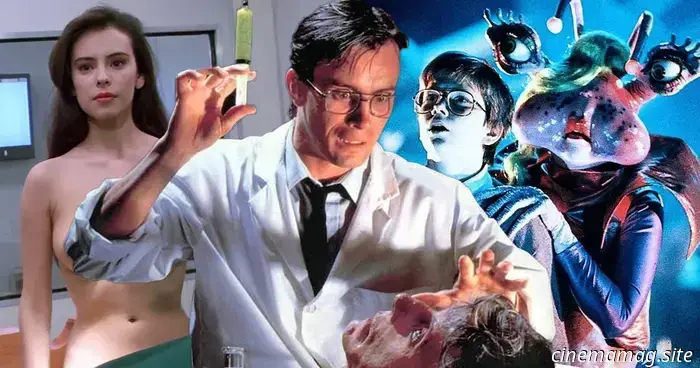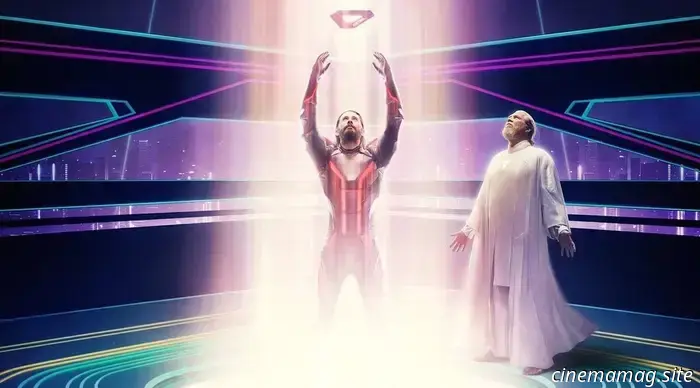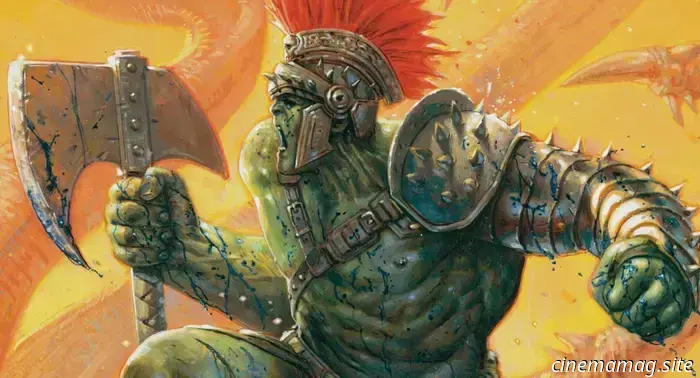
8 Essential Cult Sci-Fi Films from 1985
Casey Chong examines eight pivotal cult sci-fi films from 1985…
The year 1985 was significant for the sci-fi film Back to the Future, which grossed over $210 million domestically. Robert Zemeckis’ defining time-travel film continues to be a cinematic landmark. However, that year also featured several other sci-fi releases, some of which enjoyed success, like Cocoon, while others, such as Enemy Mine and Explorers, faced audience indifference at the time. Here is our selection of essential sci-fi films from 1985 beyond Back to the Future…
Re-Animator
Not for the faint of heart, Stuart Gordon fully embraces Lovecraftian horror mixed with sci-fi elements in Re-Animator. This film features Jeffrey Combs in his iconic, unhinged role as Herbert West, a deranged medical student determined to achieve a breakthrough in resurrecting the dead with his experimental serum. Gordon’s direction leverages the chaotic, B-movie aesthetic of a sci-fi horror infused with dark comedy. It's extravagantly bloody and gory, showcasing impressive practical effects that efficiently maintain an assured pace without unnecessary excess. The cult success of Re-Animator led to the creation of two sequels, Bride of Re-Animator and Beyond Re-Animator.
Brazil
Terry Gilliam’s misunderstood sci-fi classic failed to draw large audiences upon its release but has since been recognized as one of the genre's best. Gilliam, who co-wrote the screenplay, presents a dystopian future rife with bureaucratic nightmares and the absurd reality of a downtrodden government employee portrayed by Jonathan Pryce, who struggles between daydreams and the mundane. In addition to Gilliam’s captivating visual style and quirky humor, the film carries significant narrative depth thanks to its Orwellian themes of totalitarianism and oppression within the social and political structures of Brazil's world. Although its lengthy runtime of nearly 2 ½ hours may deter some viewers, Gilliam’s multilayered direction, which balances imaginative storytelling with subtle commentary, provides a unique cinematic experience worth viewing.
Enemy Mine
Wolfgang Petersen, known for genre-defining films like Das Boot and In the Line of Fire, also directed the sadly underrated Enemy Mine, released a year after the success of The NeverEnding Story. The film faced numerous behind-the-scenes challenges, including the original director Richard Loncraine, who was fired after filming some footage, prompting Petersen to restart the project completely. Despite his efforts, Enemy Mine was a box office disappointment, but it deserves a better reputation. Adapted from Barry B. Longyear’s novella by Edward Khmara, the film effectively weaves together themes of harmony, unity, overcoming prejudice, and universal empathy. Primarily a two-character narrative focusing on the conflict between human pilot Willis Davidge (Dennis Quaid) and the reptilian Drac, Jeriba Shigan (Louis Gossett Jr., unrecognizable due to extensive prosthetic makeup), Petersen skillfully highlights the dynamic between these two performers, elevating Enemy Mine beyond a simple tale of survival.
The Quiet Earth
This New Zealand film explores the bleak aftermath of a global catastrophe that has nearly obliterated humanity. Directed by Geoff Murphy, who would later direct Hollywood films such as Young Guns II and Under Siege 2: Dark Territory, the movie opens with a gripping scene: a man (Bruno Lawrence) awakens in a room to find himself completely alone in the city. The first 35 minutes focus on Lawrence’s character, Zac Hobson, as he copes with isolation, attempting to keep himself occupied (at one point, even trying on a woman’s dress). Lawrence delivers a stellar performance, authentically capturing the complex emotions of loneliness, frustration, and self-contentment. The Quiet Earth later introduces two additional characters: a young woman named Joanne (Alison Routledge) and a Maori man named Api (Pete Smith). Adapted from Craig Harrison’s 1981 novel, the film explores themes of human instincts, trust, and racial tension between Zac and Api, culminating in a surreal yet ambiguous ending.
Cocoon
Believe it or not, Robert Zemeckis was initially slated to direct Cocoon, but after Fox executives expressed concern over an early cut of Romancing the Stone (which ended up being a hit), Ron Howard, coming off his successful film Splash, stepped in. Howard's thoughtful direction proved to be an excellent fit for translating Tom Benedek’s screenplay about a group of seniors discovering a Fountain of Youth-like swimming pool with giant cocoons at the bottom into a touching sci-fi narrative. The film thoughtfully explores the issues of aging and rediscovered youth, as well as universal themes of life and death, through the experiences of seniors played by Don Ameche, Wilford Brimley, and Hume Cronyn. Casting this older generation of actors adds depth rather than mere nostalgia, as Howard showcases their performances. Although the special effects









Other articles
 The IMAX poster for TRON: Ares showcases Jared Leto and Jeff Bridges.
As TRON: Ares makes its way to theaters this week, Disney has unveiled a new IMAX poster for the third installment of the sci-fi franchise, featuring Jared Leto's A.I. program Ares along with the return...
The IMAX poster for TRON: Ares showcases Jared Leto and Jeff Bridges.
As TRON: Ares makes its way to theaters this week, Disney has unveiled a new IMAX poster for the third installment of the sci-fi franchise, featuring Jared Leto's A.I. program Ares along with the return...
.jpg) 4K Ultra HD Review – Spawn (1997)
Spawn, 1997. Directed by Mark A.Z. Dippé. Featuring Michael Jai White, John Leguizamo, Martin Sheen, Theresa Randle, Melinda Clarke, Miko Hughes, Nicol Williamson, and D.B. Sweeney. SUMMARY: A CIA operative...
4K Ultra HD Review – Spawn (1997)
Spawn, 1997. Directed by Mark A.Z. Dippé. Featuring Michael Jai White, John Leguizamo, Martin Sheen, Theresa Randle, Melinda Clarke, Miko Hughes, Nicol Williamson, and D.B. Sweeney. SUMMARY: A CIA operative...
 Comic Book Sneak Peek – Return to Planet Hulk #1
This week, Marvel Comics commemorates the 20th anniversary of the Planet Hulk saga with the launch of Return to Planet Hulk #1. Check out the official preview below for an exclusive sneak peek… ALL-NEW S…
Comic Book Sneak Peek – Return to Planet Hulk #1
This week, Marvel Comics commemorates the 20th anniversary of the Planet Hulk saga with the launch of Return to Planet Hulk #1. Check out the official preview below for an exclusive sneak peek… ALL-NEW S…
 Hot Toys reveals the sixth scale Artisan Edition figure of Harley Quinn from Suicide Squad.
Hot Toys has officially revealed its sixth scale Harley Quinn Artisan Edition figure, which draws inspiration from Margot Robbie's portrayal in David Ayer's 2016 DC Extended Universe film, Suicide...
Hot Toys reveals the sixth scale Artisan Edition figure of Harley Quinn from Suicide Squad.
Hot Toys has officially revealed its sixth scale Harley Quinn Artisan Edition figure, which draws inspiration from Margot Robbie's portrayal in David Ayer's 2016 DC Extended Universe film, Suicide...
8 Essential Cult Sci-Fi Films from 1985
Casey Chong examines eight pivotal cult sci-fi films from 1985. That year was significant for the iconic sci-fi film Back to the Future, which grossed more than $300 million in the U.S. alone.
